|
The arrow skimming across the top of the ripples shows the fastest bottom current that carries the sand. Because ripples move by erosion off the back and deposition down the front (the steep side), the tops of ripples are frequently lost to erosion and the cross-beds show only the lower part of the original ripple or dune. Note that the main horizontal layers are in fact very very gently inclined.
|
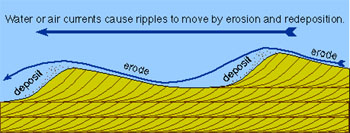
The cross-beds reflect the steep faces of ripples and dunes. These steep faces tilt down-current and thus indicate current flow direction.
Cross-beds are commonly curved at the base; this gives a handy way of determining right-side up in complexly deformed rocks.
|
|
Here you see large cross-beds with curved bases sandwiched between layers with roughly horizontal laminations.
The current moved from right to left.
These are carbonate sands and the current was wind. This photo was taken on San Salvador, The Bahamas.
|
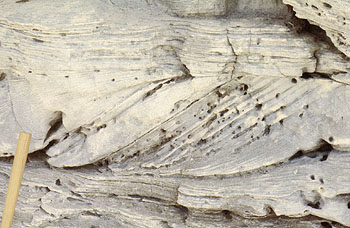
|
|
The overall layering is horizontal. These large cross-beds are in Middle Jurassic sandstones in Yorkshire, England. These sediments were deposited by river currents moving from left (now the North Sea) to right (now dry land).
|
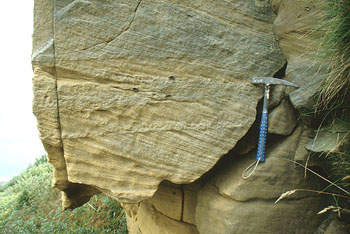
|
|
Here you see three layers: a bottom massive layer (in geology, massive means lacking obvious structures), a middle layer 1 cm thick displaying perfect little cross-beds, and a top layer with gently inclined cross-beds.
Currents moved from right to left.
Photo taken near New Kensington, PA
|
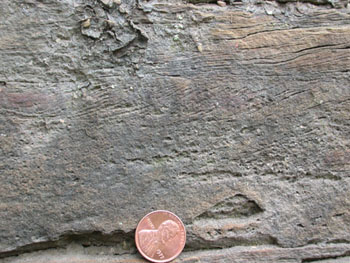
|
|
These matched sets of cross-beds tilting in opposite directions are called herringbone cross-beds.
Such beds are most commonly produced by tidals moving in and out of a shallow sea.
These are carbonate sands deposited in a tidal lagoon about 540 million years ago.
Marble Mountains, near Cadiz, CA
|
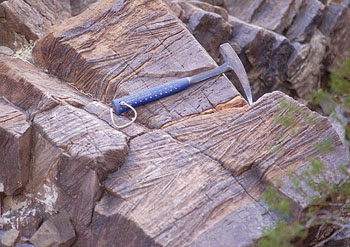
|

![]()




